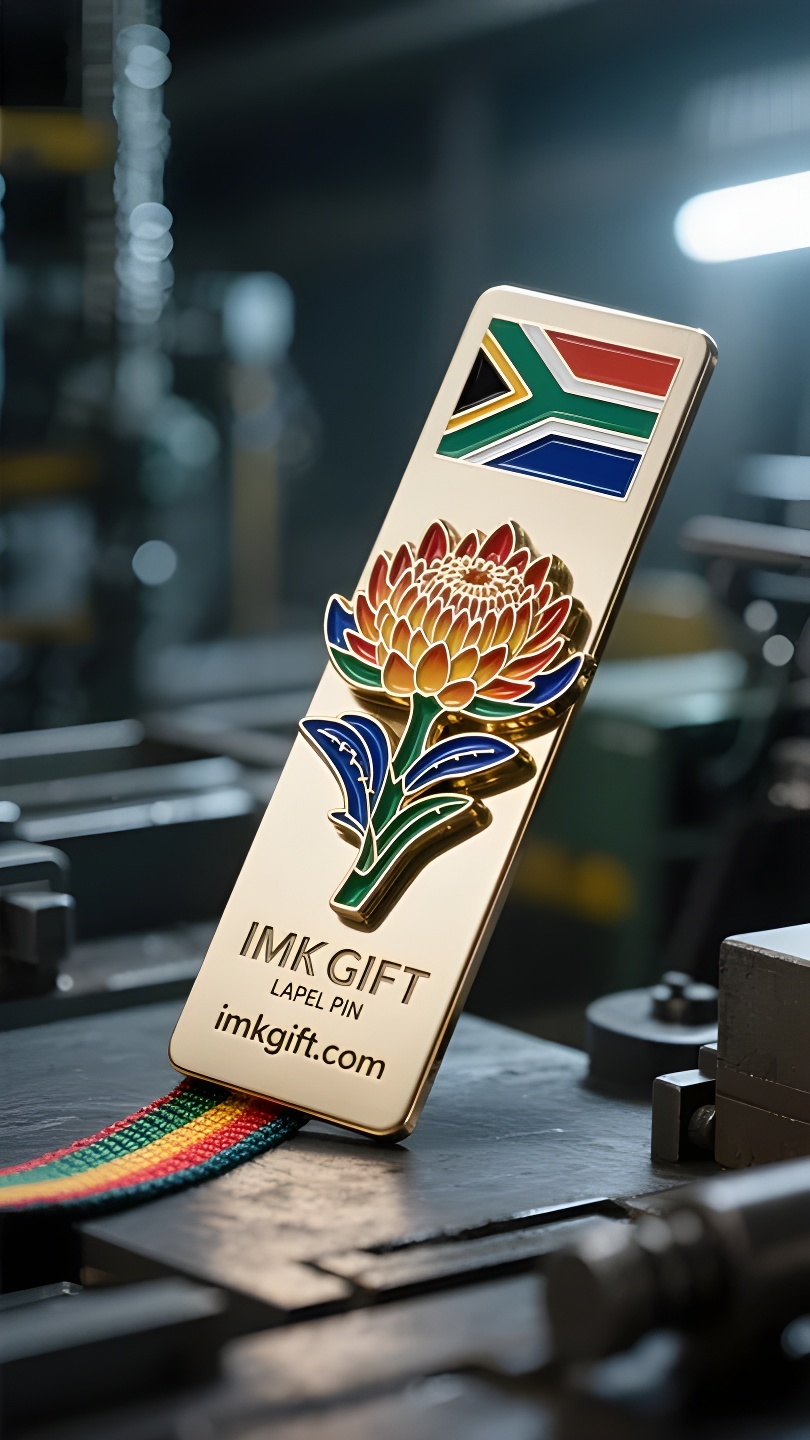in986-Koning-Protea-Boekmerk-Skryf-die-Onfeilbare-Geloof-op-die-Land-van-Suid-Afrika
▼
In September in Suid-Afrika is die lug gevul met die nasmaak van die Erfenisdagvieringe. Wanneer mense na die ses kleure rooi, blou, groen, geel, swart en wit kyk wat op die nasionale vlag verweef is, lyk dit asof hulle ‘n mikrokosmos van die reënboognasie se inklusiwiteit sien. Hierdie vlag, wat in 1994 geskep is, verbind verskillende etniese groepe nou met sy “Y”-vormige kruisingslyn, net soos Suid-Afrikaners nou nuwe paaie deur dorings oopmaak met die moed van diverse naasbestaan. Die keiserblomboekmerk op die titelblad van die Grondwet is ‘n konkrete uitdrukking van hierdie gees. As die oudste blomplant op die Afrika-kontinent, kan die koningprotea sy vurige rooi kroon in dorre rotssplete groei. Die vorm van sy skubberige skutblare wat mekaar beskerm, is net soos die vitaliteit van die verskillende sosiale groepe in Suid-Afrika wat mekaar ondersteun. Elke blomblaar wat in ‘n boekmerk gedruk word, vertel die storie: ware vasberadenheid lê nie daarin om vir ewig regop te bly nie, maar om briljant te kan blom selfs nadat dit deur die noodlot verpletter is. In Suid-Afrika plaas jongmense tans sulke boekmerke in sakeplanne, afstammelinge van immigrante integreer dit in stamboomnotas, en omgewingsvrywilligers gebruik dit om atlasse van bedreigde spesies te merk. Hierdie klein maar briljante merke verbind die trajek van individuele stryd en nasionale verjonging. Net soos die goue dagbreek op die nasionale vlag, herinner die koningprotea-boekmerk almal wat die toekoms skryf: Slegs deur diep in die gemeenskaplike grond te wortel, kan ons as ‘n onsterflike monument in die storms van die tye staan.
In September, the air in South Africa is filled with the afterglow of the Heritage Day celebration. When people gaze at the six colors of red, blue, green, yellow, black and white on the national flag, they seem to see the epitome of the tolerance of the rainbow nation. This flag, which was born in 1994, closely connects different ethnic groups with a “Y”-shaped intersection line, just as South Africans are now opening up new paths in the thorns with the courage of diverse coexistence. The King Protea bookmark pinned on the title page of the Constitution is the concrete expression of this spirit. As the oldest flowering plant on the African continent, the King Protea can breed a fiery red corolla in the barren cracks of rocks. The shape of its scaly bracts that protect each other is like the vitality of various groups in South African society supporting each other. Each petal pressed into a bookmark is telling the story: true tenacity does not lie in being upright forever, but in being able to bloom brilliantly after being crushed by fate. At this moment in South Africa, young people are inserting such bookmarks into business plans, descendants of immigrants are embedding them into family tree notes, and environmental volunteers are using them to mark endangered species illustrations. These tiny but brilliant marks connect the trajectory of individual struggle and national rejuvenation. Just like the golden dawn on the national flag, the King Protea bookmark reminds everyone who writes the future: Only by deeply rooting in the common land can we stand as an immortal monument in the storm of the times.
九月的南非,空气中飘荡着遗产日庆典的余韵。当人们凝视国旗上红蓝绿黄黑白的六色交织时,仿佛看见彩虹国度包容的缩影。这面1994年诞生的旗帜,以”Y”型交汇线将不同族群紧紧联结,正如当下南非人正以多元共生的勇气,在荆棘中开辟新的通途。
而别在《宪法》扉页的帝王花书签,恰是这份精神的具象化表达。作为非洲大陆最古老的开花植物,帝王花能在贫瘠的岩缝中孕育火红的花冠,其鳞状苞片层层相护的形态,恰似南非社会各群体相互支撑的生命力。每片被压制成书签的花瓣,都在诉说着:真正的坚韧不在于永远挺拔,而在于被命运碾轧后仍能绽放华彩。
此刻的南非,年轻人正将这样的书签夹进创业企划书,移民后代将其嵌进族谱笔记,环保志愿者用它标记濒危物种图鉴。这些微小而璀璨的标记,串联起个体奋斗与国家振兴的轨迹。就像国旗上那道金色的曙光,帝王花书签提醒着每个执笔书写未来的人:唯有将根系深扎于共同的土地,才能在时代的风暴中站成不朽的丰碑。
▼
Contact Us
📞 Tel: +0086-760-85286839
📧 Email: sales3@imkgift.com








